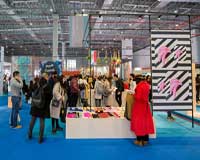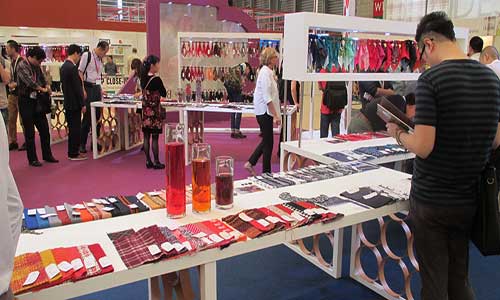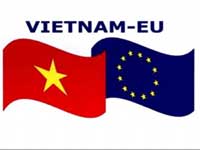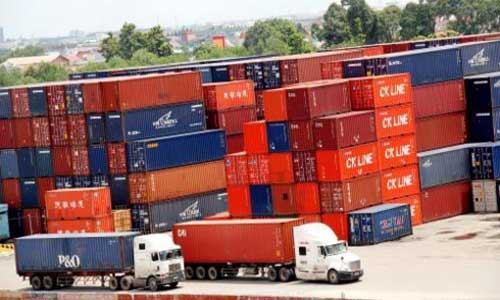FW
The global silk market is projected to grow at a CAGR of 7.8 per cent from 2016 to 2021. Growth can be attributed to technological advancements in sericulture, which directly increases the yield of silk. Moreover silk is a low capital investment industry in terms of technology and labor.
Though demand for silk products is growing in Europe and North America, the Asia-Pacific region is the largest market for silk. It has a large number of textile manufacturers and growing demand from the domestic market. China dominates the silk market in the Asia-Pacific region followed by India. Raw silk is easily available in the two countries. China is the largest producer of silk yarn and textile products. The Asia-Pacific region remains the fastest growing market for silk in terms of value and volume.
Based on type, the mulberry silk segment is projected to lead the silk market. Owing to its high strength, durability, and flexibility, mulberry silk is used in the production of textiles such as apparel, wedding dresses, gowns etc as well as in interiors such as pillows, wall hangings, and upholstery. The growing textile industry in the Asia-Pacific region is driving the demand for mulberry silk in the region.
Abercrombie & Fitch has been changing its image amid a challenging retail market. In 2014, it did away with its iconic moose logo. And in July this year, the brand removed its signature scent from its stores. Instead shoppers will be greeted with the smell of a gender-neutral fragrance that is more in keeping with the current predilection for gender-neutral or unisex fashion.
For the first time in 15 years, the brand has completely updated its jeans line. The new denim line utilizes latest technology and fabrication, including a 360-degree stretch. One of the most obvious changes from Abercrombie’s previous denim offerings is the absence of the brand’s distinctive stitching on the back pockets. The women’s line will have sustainable denim. These styles use less water to achieve the desired wash.
The changes come as a difficult retail market has forced many retailers to shut stores or declare bankruptcy in the past few years. Among those are brands with a strong presence in malls and following among teens such as True Religion, Rue21 and Aeropostale.
Despite the difficult market, Abercrombie’s design process remains focused on the clothes rather than the finances. It’s focused on making an exceptional product at an exceptional value and offering the ultimate casual luxury brand experience.
"As the global apparel fabrics and accessories industry prepares to gather in Shanghai from October 11-13 for Intertextile Shanghai Apparel Fabrics – with suppliers from 25-plus countries and trade buyers from around 100 countries – exhibitors are gearing up for yet another edition of strong results. Occurring towards the end of the autumn/winter sourcing period, buyers come to the fair well informed of next season’s trends, and are in a position to be able to make their purchasing decisions from the around 4,500 exhibitors that will be present."

As the global apparel fabrics and accessories industry prepares to gather in Shanghai from October 11-13 for Intertextile Shanghai Apparel Fabrics – with suppliers from 25-plus countries and trade buyers from around 100 countries – exhibitors are gearing up for yet another edition of strong results. Occurring towards the end of the autumn/winter sourcing period, buyers come to the fair well informed of next season’s trends, and are in a position to be able to make their purchasing decisions from the around 4,500 exhibitors that will be present.

With fast paced changes both in national economies and the apparel fabrics and accessories industry, the number of trade buyers at the fair – around 70,000 – and their diversity – some 100 countries – presents an unrivalled opportunity for exhibitors to find new markets, or double-down on existing ones. This diversity is further shown in buyers’ product sourcing preferences at the fair. Last year, buyers’ main area of sourcing interest for all eight main fabric product categories was between 11 per cent and 38 per cent, reflecting a relatively even spread across all types of fabrics.
Innovation at its best
While Intertextile Shanghai is well-known for its exhibitor and product breadth, buyers in the know also use it as a sourcing platform for latest functional apparel fabric innovations. The fair’s Functional Lab, which will feature around 50 exhibitors this edition is the centre of innovation at Intertextile, featuring a wide selection of innovative yarns and fibres, fabrics, accessories, finishes and coatings, membranes and more, particularly for athleisure, sports and outdoor wear, as well as lingerie. Buyers looking for eco-friendly options can find plenty to choose from in this zone as well.
For instance, Aquafil, an Italian firm will showcase its Dryarn® fibre at the fair; what they claim is the lightest fibre in the natural world. Garments made of Dryarn® weigh 32 per cent less than an equivalent garment made of wool, and 34 per cent less than one of polyester. Moreover, it offers high levels of thermal comfort and breathability which makes it ideal for a wide range of uses including fashion, and sports and outdoor wear.
Belgium’s Vetex, specialists in coatings and laminations for various textiles, won an award at the recent Techtextil fair in Frankfurt for their ecologically-friendly solution to replace dimethyl formamide (DMF) as a solvent in PU coatings. At Intertextile Shanghai, they will present their seam seal tapes which are fixed to shoes, garments and outdoor products through a unique hot air process (seam sealing), an innovative technology that ensures they retain their specific properties during the manufacturing process. They will also showcase their laminates for the medical industry at the fair.
The Chemours Company will showcase Teflon EcoElite™ durable water repellent (DWR), which is a highly sustainable, renewably sourced, non-fluorinated treatment for fabrics. It contains 63 per cent renewably sourced content, is up to three times more durable than existing non-fluorinated repellents, and has high water repellency for at least 30 washes.
Expanded Taiwan Pavilion at Functional Lab
In addition to the expanded Taiwan Pavilion inside the Functional Lab (hall 5.2), a number of innovative products will also be on offer in the main Taiwan Pavilion in hall 6.2. For example, Kong You Industrial will feature a new technology at the fair – a waterproof, microporous PU membrane with enhanced breathability due a special four-way stretch technology employed during the melt extrusion process of the knitted fabric and PU membrane. Sheng Ye will showcase their new generation, eco-friendly, lightweight composite fabric. This fabric also contains a special high-tech film with pores that are extremely small and have an irregular curved arrangement, giving it a high permeability and resistance to water pressure. PFC-free, it is also biodegradable. This fabric is suited to outdoor wear and outdoor supplies.
Along with Intertextile Shanghai Apparel Fabrics, three other textile fairs are held concurrently: Yarn Expo Autumn (hall 5.1), CHIC (halls 2 & 3) and PH Value (hall 3). Intertextile Shanghai Apparel Fabrics – Autumn edition 2017 is co-organised by Messe Frankfurt (HK) Ltd; the Sub-Council of Textile Industry, CCPIT; and the China Textile Information Centre.
"The international denim exhibition in Dhaka keeps growing in numbers and quality of exhibitors, providing a unique insight on Bangladesh denim, each edition. The 7th edition is slated to open doors on November 8th and 9th 2017 in Dhaka. In Japanese ‘Kaizen’ is the word for ‘continuous improvement’ process, a word that has often been associated with business companies to describe activities that continuously improve in all their functions. A concept deeply rooted in the organisational strategy of Bangladesh Denim Expo."

The international denim exhibition in Dhaka keeps growing in numbers and quality of exhibitors, providing a unique insight on Bangladesh denim, each edition. The 7th edition is slated to open doors on November 8th and 9th 2017 in Dhaka. In Japanese ‘Kaizen’ is the word for ‘continuous improvement’ process, a word that has often been associated with business companies to describe activities that continuously improve in all their functions. A concept deeply rooted in the organisational strategy of Bangladesh Denim Expo.

Improvements planned for the next edition are in three main directions: a new up-to-date main theme, an expanded roster of exhibitors with specific focus on Bangladesh industry, and a wider international outreach reinforcing strategic partnerships. Bangladesh Denim Expo Founder and CEO, Md Mostafiz Uddin explains, “The vision of Bangladesh Denim Expo is to make Bangladesh a sourcing hub by creating a multinational gathering, exposing new business horizons and greater corporate opportunities for the entire denim value chain as well as enhancing the country’s image in the world.”
For the upcoming event, a new forward-thinking main theme has been put forth around the concept of ‘Transparency’. Exploring in detail its meaning and how this issue is perceived and treated in the fashion industry, will be at the heart of the new edition with events that will delve into it in an unprecedented way on an expo level. Moreover, the 7th edition is expected to be the most successful ever with around 58 exhibitors from all over the world already confirming their participation. Around 40 of them are from outside the country and 18 are Bangladesh-based denim companies.
A larger number of Bangladesh exhibitors will be featured to provide a genuine insight into the capabilities of Bangladesh denim industry. Among them are the four biggest denim garments manufacturers of Bangladesh in terms of export volume: Pacific Jeans, Ananta, Bitopi and Dekko.
Leading companies participating
These four brands are among the frontrunners in Bangladesh’s denim market in innovation and adoption of sustainable practices. Pacific Jeans Group is regarded a pioneering company to upload Bangladesh as a premium apparel manufacturer in the global marketplace and awarded as top exporter of Bangladesh for five consecutive years. It is one of the leading premium jeans manufacturers, employing 26,000 people, producing 36 million jeans every year & exporting to over 25 countries.
Ananta Group manufactures diversified products acts as a strategic vendor for key customers. Bitopi Group’s two factories are LEED Platinum certified. The group produces trousers, denim, outerwear for H&M, Benetton, Decathlon etc. Dekko Group comprises 17 operating companies in five business sectors – export-oriented readymade garments, garments accessories, paints, and food. Dekko’s brands are available in nearly 40 countries.
Plethora of innovative offerings
The upcoming exhibition will see companies exhibiting their top products and best practices centred around the main theme of the Expo, representing the full denim supply chain, with 42 denim mills, along with a selection of garment manufacturers, fibre and yarns suppliers, chemicals suppliers, machinery producers and washing & laundry companies.
The international reach of the show is reinforced, due to partnership with world renowned Italian laundry and dyeing company Tonello Garment Finishing Technologies, which will attend the show with a special Denim Gallery, displaying a range of products specifically finished for the show.
"If everything goes well, Vietnam and the EU are set to agree to and ratify a wide-ranging free trade pact, known as the EU-Vietnam Free Trade Agreement, or EVFTA, by early 2018. The agreement was first envisaged in 2012 and once enacted, it is expected to accelerate trade between Vietnam and individual EU states. According to recent developments, the timeframe could be delayed, due to a ruling that each EU member state must individually agree to the deal. Vietnamese Prime Minister Nguyen Xuan Phuc’s recent visit to Germany was aimed to expedite the deal’s enactment."

If everything goes well, Vietnam and the EU are set to agree to and ratify a wide-ranging free trade pact, known as the EU-Vietnam Free Trade Agreement, or EVFTA, by early 2018. The agreement was first envisaged in 2012 and once enacted, it is expected to accelerate trade between Vietnam and individual EU states. According to recent developments, the timeframe could be delayed, due to a ruling that each EU member state must individually agree to the deal. Vietnamese Prime Minister Nguyen Xuan Phuc’s recent visit to Germany was aimed to expedite the deal’s enactment.
For Vietnam EVFTA could work well

Germany is Vietnam’s largest European trading partner; the Netherlands is its second. It is estimated that Germany receives more than 20 per cent of all Vietnamese exports to Europe, with bilateral trade worth almost $9 billion last year. The Netherlands, meanwhile, is the largest European investor in Vietnam with $7.7 billion in total committed capital. Trade between the two nations was worth $6.7 billion in 2016.
For Vietnam, EVFTA is the next best thing after Trans-Pacific Partnership (TPP), a monumental free-trade agreement between 12 Pacific Rim nations, including Vietnam, that US President Donald Trump withdrew from on his first day in office, effectively killing the deal. Vietnam was set to be one of the pact’s biggest beneficiaries. After America, Europe is Vietnam’s largest export market, which readily purchases Vietnamese-made electrical equipment, footwear and garments. In 2006, trade between the EU and Vietnam was worth a paltry $10 billion. A decade later, it has grown to $48 billion.
Experts say, uniformity of goods and stability in supply chains will need to be maintained. Agricultural firms, for example, will have to adapt to the EU’s strict ‘rules on origins’ requirements. Electrical manufacturers, meanwhile, will have to deal with the stringent copyright laws that the EVFTA enforces.
With the hope that EVFTA will boost foreign investment from Europe, the Vietnamese government is set to make the business climate friendlier for foreign companies. Vietnam jumped nine places in the World Bank’s latest ease of doing business ranking. In Europe, Phuc repeatedly spoke about the Paris climate accord, a major anti-climate change initiative signed last year, and asked European partners to help in Vietnam’s push for renewable energy.
Vietnam believes European investors can use the country as a springboard for expanding into the rest of the region. Speaking in the Netherlands, Phuc said EVFTA will allow the EU and the Association of Southeast Asian Nations (Asean) to ‘forge a deep and comprehensive economic connection’. The EU does not currently have a free trade agreement with any Southeast Asian country. While the EU-Singapore Free Trade Agreement (ESFTA) was agreed in 2014, analysts believe it will be ratified later than EVFTA. For the EU, EVFTA is a first step towards a possible free trade agreement with Asean.
Unlike TPP, the EVFTA does not come with any requirements for more political liberalism. Under the TPP, the Vietnamese government would need to allow independent trade unions to operate, an opening that no doubt made the authoritarian regime nervous. EVFTA mandates that EU companies must able to bid for public procurement tenders under the ‘same conditions’ as Vietnamese companies. Some hope this will force the government to curb rampant corruption in state contracts, as well as speed the privatisation of Vietnam’s many cash-hemorrhaging state-owned enterprises.
From January to April 2017 EU’s apparel imports dipped 2.88 per cent. China’s quantity-wise apparel exports to the EU dropped by 3.31 per cent. Vietnam, Bangladesh and India too saw a drop in quantity-wise exports by 0.78 per cent, 1.76 per cent and 2.06 per cent respectively.
Weak euro and the fall of the sterling were the main reasons behind the decline. Falling demand is another reason. Retail stores are rapidly closing in Europe and renowned clothing brands are cutting their apparel quantities. The increase in unit prices has also impacted EU imports negatively. There was also a rise in unit value realization, which indicated that the EU is importing apparel by paying more value to the exporting countries.
This change in retail landscape and consumer behavior is shifting demand from in-store shopping to online purchasing, making the EU a tech-driven market. The EU is the second largest apparel importer in the world. In the second half of 2017 how the EU’s apparel sector fares would depend on global economic conditions as well as trade policies across the world. The transition from retail store to digital shopping might take some time to really build up and in the meantime demand for imports may rise or remain steady.
Cambodia wants preferential trade terms for its footwear exports from the United States. Preference systems let developing countries export certain goods to donor countries at reduced tariff levels. Cambodian footwear, textiles and garments are excluded from the US GSP. Cambodia’s footwear and garment industry exports under the US’ most favored nation program are taxed by the US, which wants to protect its local industries.
The US offers GSP to poor countries since 1974 but garment and footwear products have never been included. The US is now going to consider granting GSP on footwear and so Cambodia wants to be included under that benefit even though GSP doesn’t reduce the tax to zero. But for that to happen Cambodia has to show improved working conditions with high levels of labor and social compliance and high minimum wages.
If Cambodia does succeed, it would be important for Cambodia’s economic development as there would be more investments resulting in the creation of jobs. It would be good news for Cambodia if the US grants GSP to the footwear industry which currently exports a lot to the EU and the US under the most favored nation scheme. Last year, the US granted GSP to Cambodia for export of travel goods such as luggage, backpacks, handbags and wallets.
Circular knitting machine manufacturer Mayer offers several machines that are suitable for making of shoe uppers. The OVJA 1.6 ET 3 WT is one such. It is very versatile in terms of the patterns it can produce, especially because it can transfer stitches on every third system. Its three-way technology ensures maximum design and flexibility by means of individual needle selection. It makes a wide range of structures. Using a conversion kit the OVJA can also be quickly used as a full jacquard machine to produce multi-coloured shoe designs.
The newcomer to the range, specially designed for use in the shoe upper sector, is the OVJA 1.6 EE – 3WT/2WT. It uses three-way technology in the cylinder and two-way technology in the rib dial, thereby ensuring maximum pattern variety. This combination makes it an optimal footwear machine that is especially suitable for the production of multi-coloured designs along with microstructure elements.
The conventional means of manufacturing shoe upper material for sport shoes has until now been either flat knitting or warp knitting. Circular knitting has the edge over both of these in terms of productivity and variety of patterns. Mayer, based in Germany, manufactures the entire range of machines required for making modern textiles like fabrics for home textiles, sportswear, nightwear and swimwear, seat covers, underwear and technical uses.
A Research, Innovation and Science for Engineered Fabrics (RISE) conference will be held in the US, September 12 to 14, 2017. The conference, slated to take place at Sheraton Raleigh Hotel, Raleigh, NC and is being organized by INDA (Association of the Nonwoven Fabrics Industry).
Around 25 industry leaders will present a dialogue on the theme ‘This Changes Everything’. RISE, now in its seventh edition, continues to connect new and emerging technologies with near-term commercial applications to solve immediate real-world industry needs.
The program will explore the future of manufacturing, moisture management, nonwoven structures, inventing the future, advanced materials performance, wet-laid nonwovens, technology and money, advanced biomaterials, advanced machinery, industry updates in nonwoven market changes, and government affairs.
The Association of the Nonwoven Fabrics Industry serves hundreds of member companies in the nonwovens/engineered fabrics industry in global commerce. Since 1968, INDA events have helped members connect, learn, innovate, and develop their businesses. INDA educational courses, market data, test methods, consultancy, and issue advocacy help members succeed by providing them the information they need to better plan and execute their business strategies.
The RISE conference embraces INDA’s mission to stimulate and recognize innovation. Like-minded, forward-thinking technology professionals will look forward to the moment when the potential impact of a new approach to a material science challenge is revealed. For technology scouts and new product innovators, this is an event not to be missed.
VF Corp’s second quarter revenue from continuing operations increased two per cent. Outdoor and Action Sports revenue increased four per cent; Imagewear revenue 11 per cent; international revenue four per cent; direct-to-consumer revenue 13 per cent; and digital revenue 34 per cent. Vans brand revenue increased eight per cent; North Face revenue increased five per cent and Timberland revenue increased two per cent. But Wrangler and Lee revenue decreased two and seven per cent. Also, revenue in China increased 13 per cent, followed by the APAC region, which increased seven per cent and the Americas (non-US) segment that increased five per cent.
For the six months ended June 2017, total revenues and net sales were flat, international revenue increased three per cent and only Vans and North Face posted increases in revenue at seven per cent and six per cent.
Gross margin in the quarter improved 80 basis points to 49.7 per cent, operating income was down 14 per cent and earnings per share was down 11 per cent. Based on the strength of first half of 2017, and its expectations for the second half, the corporation is making growth-focused investments in its largest brands and platforms to generate additional value for shareholders both in the near and long term.











